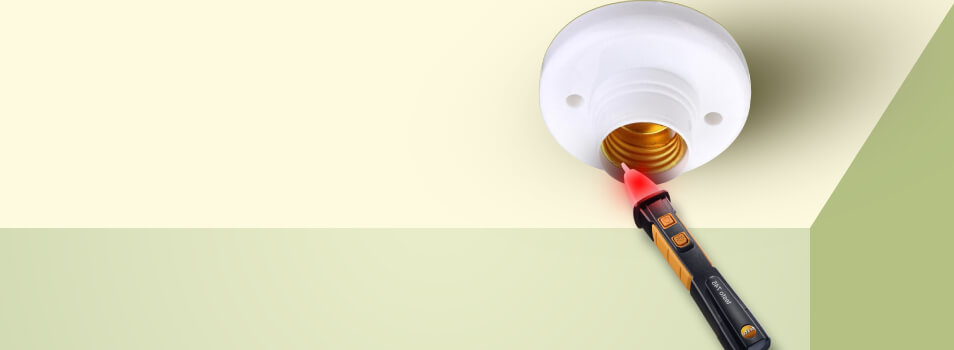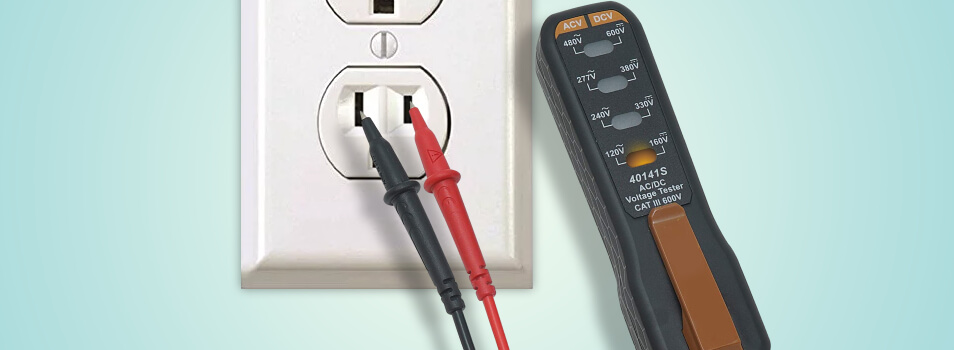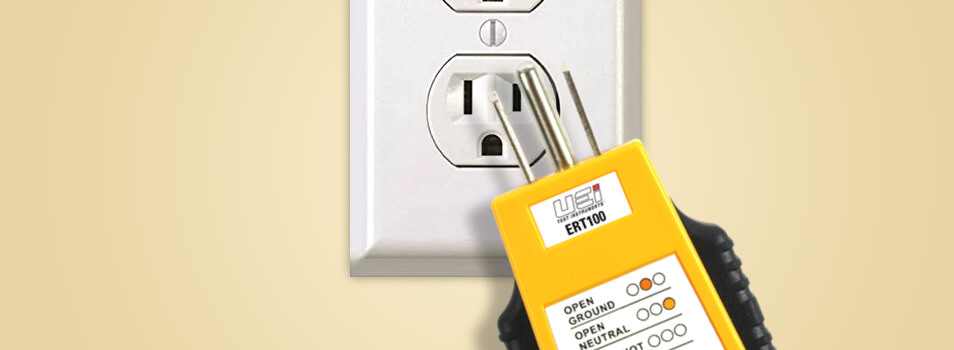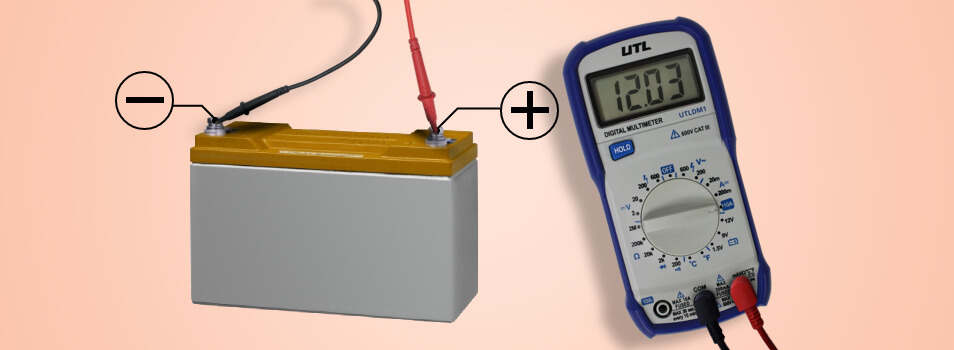- Show results for
- Share
How To Use a Voltage Tester?
Resource Description

Table of Contents
Introduction
When working with electricity, you need to be careful and know exactly what you are doing. If you touch the power wire with your hand, for example, the voltage of 120V can hurt you. To maintain safety, don’t forget to wear insulating gloves.
In addition, it is necessary to use your tools the right way. In this article, we will explain what a voltage tester is and how to use it.
What is a voltage tester?
A voltage tester (or a voltage detector) is a special device designed to detect whether there is an electrical charge in an electrical circuit/component. You will know whether something is energized or not.
Using a voltage tester is important to understand if the electrical components are working as they should and if they are safe to handle.
Types of Voltage Testers & How to Use Them
There are a few types of voltage testers. You can choose from non-contact voltage testers, contact voltage testers with probes, receptacle testers. There are also multimeters that can test voltage and provide you with other measurements as well.
Let’s consider these devices in more detail.
Non-contact voltage tester
A non-contact voltage tester typically has a shape of a pen. Thanks to its compact size and light weight, this device is widely used in many applications, for example, the installation of a ceiling fan, a thermostat, a light fixture, the list goes on.
It is designed to detect an electrical current without touching live wires or electrical components, which means it is safer to use than other types of voltage testers. You will ensure that the wires are not live before you start working. However, bear in mind that sometimes, if you put a non-contact voltage detector on the wrong spot, you may think that the thing is not energized when in fact it is. You can double-check the results using a contact voltage tester, but more about this device a bit later.
How does a non-contact voltage tester work?
Near the live conductor, there are typically electric fields. A special sensor at the tip of a non-contact voltage sensor detects these electric fields that are associated with AC voltages. If there is sound and/or light indication, then the thing you are testing (a receptacle, a wire, etc) is energized.
Non-contact voltage testers are affordable and easy to operate. These devices are used by electricians, however, they can be purchased for home use as well.
How to use a non-contact voltage tester?
The process is pretty straightforward. If the thing is energized, your voltage tester will let you know about that via indicators.
Let’s see how a non-contact voltage detector can be used.
1. Switch on your voltage tester

Press (or press and hold, depending on the model, check the user’s guide that comes with your device) the power button. After that, there should be sound and/or light indication.
2. Test your voltage tester

You can put the tip of the voltage tester on the lit lamp. Alternatively, you can place the tip in the slot of an electrical outlet.
3. Now you can test the following:
- An electrical outlet

Touch the tip of your contactless voltage tester to the small slot of the electrical outlet. Additionally, test the large slot so you can ensure that the outlet is properly wired.
- A breaker switch

Put the tip of your non-contact voltage tester to the switch in the panel of a breaker box.
- A light switch

The switch should be turned on. Remove the switch plate. Touch the tip of your contactless voltage tester to the screw terminals on the side of the light switch. You can remove the light switch only if it doesn’t have a live electrical current.
- A light fixture

Turn off the light. Wait for some time to make sure that the light bulb is not hot. Unscrew the light bulb and then turn on the light using a light switch. Put the tip of your contactless voltage tester inside the light socket. (For a 3-way switch, test the light when a switch is in the up & down positions).
The light fixture can be removed from the ceiling only if the light fixture doesn’t have an electrical current.
Contact voltage tester with probes

A 2-lead electrical tester (or a contact voltage tester) makes electrical contact with the electrical circuit/component. This device has 2 probes, one is red and the other one is black.
How to use a contact voltage tester?
If you are going to check the voltage of an electrical outlet using a contact voltage tester, you need to:
1. Place the black probe in the "COM" or "-" port

Don’t take out the black probe if the red one is still attached to the hot side. Otherwise, the risk of a shock will increase.
The black probe is designed to measure the neutral or ground wires.
2. Place the red probe in the “V” (or voltage) port.

This probe is used for the connection to the hot wire (the one that carries the electrical current).
3. Look at your voltage tester.

If there is indication (light and/or sound), then the voltage is present. Typically, there are a few different levels to tell you what voltage is present. Thanks to direct contact, 2-probe testers are more reliable than non-contact devices.
Receptacle tester
An electrical outlet tester (or a receptacle tester) has a three-prong power plug on one end & three indicator lights on the other side. This device checks that each contact in the outlet is connected to the correct wire in the electrical wiring of the building. Using a receptacle tester you will know if the electrical wires need to be changed or repaired.
How to use a receptacle tester?
Using this device is easy as ABC! Here are just two simple steps to follow:
1. Plug your receptacle tester into the outlet

2. Read the results

Electrical outlet testers are equipped with three LED indicators. As a rule, there is one red and two yellow lights. In addition, on your device, there must be a chart that explains what each indicator means.
The most common readings include the following:
|
INDICATORS
(1- red, 2- yellow, 3- yellow or white) |
MEANING | DESCRIPTION | ||
| 1 | 2 | 3 | ||
| OFF | Yellow | Yellow | Correct | Outlet is wired correctly. |
| OFF | Yellow | OFF | Open Ground | Ground contact is not connected. |
| OFF | OFF | Yellow | Open Neutral | Neutral contact is not connected. |
| OFF | OFF | OFF | Open Hot | Hot contact is not connected. |
| Red | Yellow | OFF | Hot & Neutral Reversed | Reverse polarity. The black wire (hot) & the white wire (neutral) are reversed on the receptacle. |
| Red | OFF | Yellow | Hot & Ground Reversed | The connection of the hot and ground wires have been crossed or reversed. |
Multimeter as a voltage tester
A multimeter can be used as a voltage detector as well. A multimeter is a versatile and portable device that is designed to measure voltage as well as electric current, resistance, and more. With a multimeter, you will know exactly the voltage of an electrical current. The device has two probes, a dial to choose the mode, and a display to show the readings.
How to use a multimeter to test voltage?
As we mentioned earlier, multimeters can function as voltage testers. Testing an electrical outlet using a multimeter is similar to the process with a contact voltage tester with probes. The difference is that you need to set the switch to AC voltage & choose the range before testing plus the results will be shown on the display.
To test a battery using a multimeter, follow the steps below.
1. Make sure the probes are in the right place & power on your multimeter

The black probe should be plugged in the “COM” port of your voltage tester, when the red probe should be plugged in the ‘+’ port of the device. Only when the probes are in their place, you can use the tester.
2. Select the voltage mode.

Using a dial, select the DC mode, as a rule, the DC mode is indicated by the “V” symbol with a straight line.
3. Select the voltage range.

You can do it by turning the knob or, if there is a separate “Range” button, use it.
The voltage reading should be within the range you are expecting to receive. Thus you will get as accurate readings as possible. For this, you need to know the voltage of the thing you are testing.
For example, the voltage of a regular AA battery is 1.5V DC. On your multimeter, the knob should be at the“V” with a straight line. Then, select the range that will be as close as possible to 1.5V. You can select a bigger value.
4. Put the black probe on the negative terminal.

The black probe should be placed on the negative terminal, which is marked by the “-” symbol.
5. Put the red probe on the positive terminal.

The red probe, in its turn, should be put on the positive terminal, which is marked as “+”.
6. Read the results

The measurements will be shown on the display.
Final Thoughts
As you see, there are several devices you can use if you need to test voltage. It is important that you know how to use your tester. Hopefully, now you get the idea of using your voltage tester properly.
The #1 thing you have to bear in mind is safety. Do not touch energized components with your hands. In addition, if your device has probes, hold them by the insulated parts. Make sure that your hands are dry. These are just some of the rules to follow. For more information, read the manufacturer’s instructions before working with the device.
Using a damaged voltage tester can put your health or life at risk. If you don’t have a voltage tester or you need to replace your old one, choose from a broad range of devices on our website!












